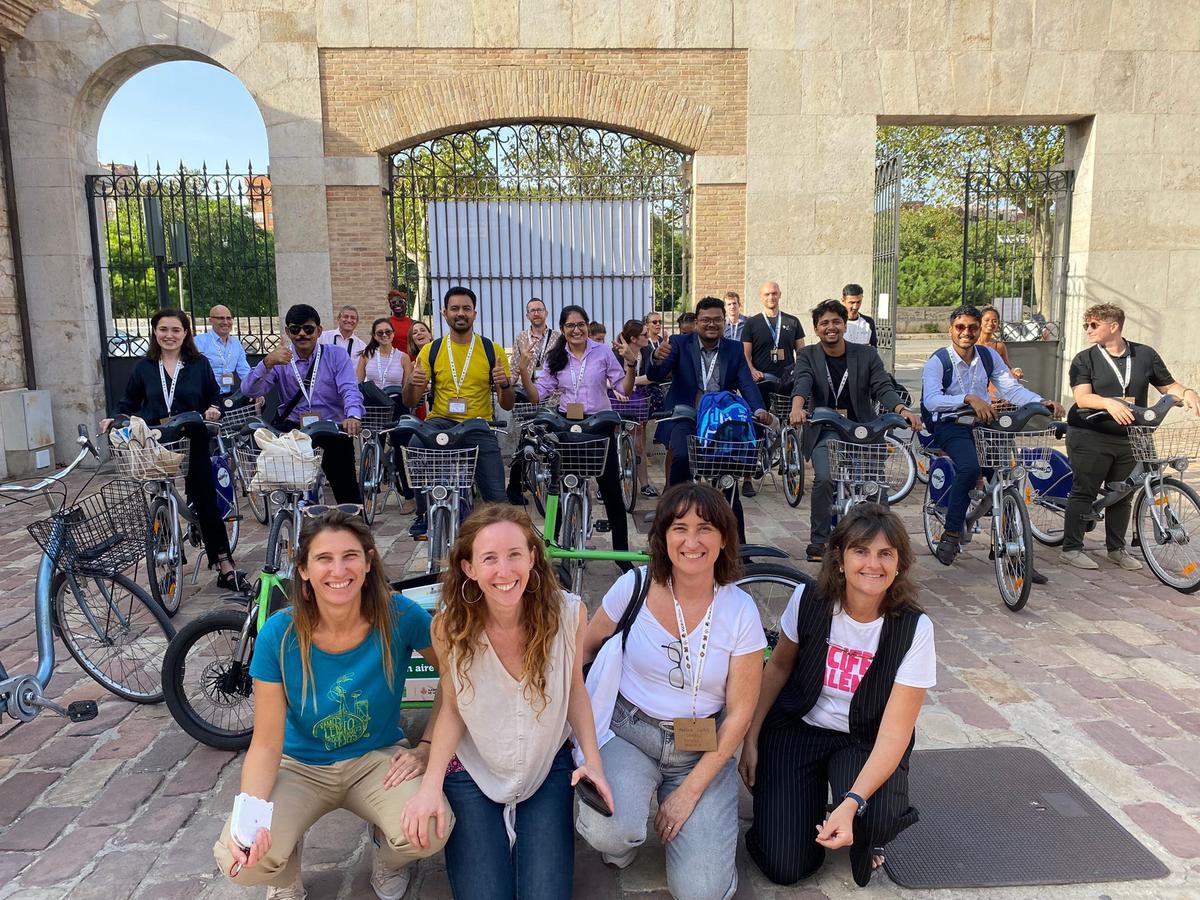
ConBici, the National Coordinating Body for the Defense of Bicycles, and Clean Cities launched the Cycling with Clean Air initiative to answer a critical question: “What’s in the air that cyclists breathe”?
ConBici, the National Coordinating Body for the Defense of Bicycles, and Clean Cities launched the Cycling with Clean Air initiative to answer a critical question: “What’s in the air that cyclists breathe”? Designed as a community science campaign, the project trained volunteer cyclists to monitor air quality and understand its health impacts. Over more than three years, ConBici deployed AirBeam sensors in 18 Spanish cities, collecting over 14 million georeferenced measurements across 8,400 bicycle trips. The data revealed dangerously high levels of particulate matter pollution, especially during rush hour and near sensitive areas like schools. By documenting real-time exposure, the initiative aimed to pressure local authorities to take climate change seriously, adopt sustainable mobility plans, implement Low Emission Zones, and put public health at the center of urban policy.
ConBici chose the AirBeam sensor for its portability and ease of use on bicycles, an essential feature for capturing real-time air quality data along actual cycling routes. Before the Cycling with Clean Air initiative, most urban air pollution was measured using fixed monitoring stations, which often fail to reflect the conditions people experience while walking and biking at street level. These fixed stations are typically located far from traffic or pedestrian zones, missing pollution hotspots just meters away from vehicle exhaust. The use of mobile, bike-mounted AirBeams allowed ConBici to gather more accurate and localized data on the air people actually breathe while navigating cities.
Once volunteer cyclists were selected, ConBici provided them with AirBeams and trained them on how to use them and interpret air quality data. At the beginning of the project, ConBici requested only 2 hours of volunteers’ time - but many volunteers became so interested in the project they spent more hours collecting air quality data, choosing to monitor nearly every time they rode their bike.
The Cycling with Clean Air initiative helped bridge the gap between scientists and people. The air quality data collected was shared widely across neighborhood and business associations, environmental NGOs, local officials, and other social stakeholders. Once cyclists realized air quality monitoring could be accessible, they felt empowered to continue collecting air quality data, increase their awareness of air pollution, and share their findings with their communities and local officials. For many volunteers, this was a transformative experience: they became more aware of the air they breathe, more informed about pollution’s health impacts, and more vocal in demanding change. Where officials once dismissed air pollution as an abstract concern, they are now listening thanks to credible, community-generated data and a growing chorus of resident voices.
ConBici compiled the results of the initiative in the Cycling with Clean Air 2024 Report, which revealed widespread and persistent exposure to unsafe air. Nearly 49% of all recorded measurements exceeded World Health Organization guidelines for pollution levels. Alarming spikes were recorded near schools, where children were exposed to pollution twice the safe limit during drop-off and pick-up times. The report also found that only 8 of the 18 participating cities had fully implemented their Low Emission Zones, despite legal mandates to do so. The data made one thing clear: air pollution poses serious health risks to everyone, regardless of how they move through the city.
In recognition of the campaign’s impact, ConBici received the Green Light Award from Onda Cero and WWF Spain in June 2025. The organization dedicated the award to the hundreds of volunteers whose rides, data collection, and commitment made the project possible.
Today, ConBici is using this momentum and the power of community-generated data to advocate for bolder climate action, safer urban mobility, and cleaner air for all. Backed by evidence and community voices, they are shifting the conversation, and making it harder for decision-makers to ignore the urgent need for change.